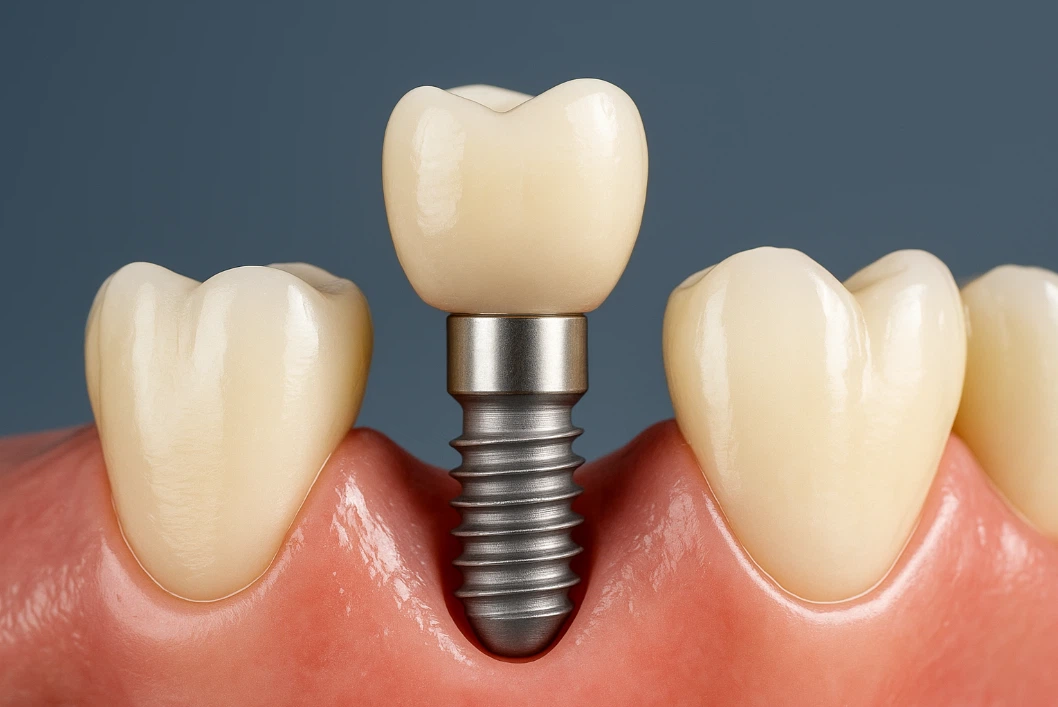🦷 How is a Tooth Filling Done?

How is a Tooth Filling Done?
One of the most frequently done dental procedures is getting tooth fillings. Whether you have a cavity, tooth decay, or an old filling that needs to be replaced, getting a filling is a relatively simple process that one can go through. Nevertheless, there are still a lot of patients who are curious about the procedure details and related cautions. This article is going to walk you through the whole process of having a tooth filling, the different kinds of fillings there are, as well as the things you need to ponder after your treatment.
What is a Dental Filling?
Dental fillings are one type of restorative dental treatment that is done to fix a tooth damaged by trauma or decay. This not only restores the tooth’s function but also prevents further damage. In a now-decayed tooth, the bacteria cause the infection inside the cavity, and once it is infected, it can spread and lead to pain, inflammation, and so on. Fillings are put there essentially to stop this process, and at the same time, they add strength to the teeth. In addition to removing decay, they also help to prevent its spreading and maintain the tooth’s natural appearance for the longest time possible.
Dental fillings comprise different materials, each having its characteristic features. Certain fillings are more or less long-lasting and can withstand the force of a person’s chewing, but the others are less obvious when you are smiling and thus more appealing, and remain suitable for lack of strength, and when the rest of the tooth is completely unaffected, they can still be used.
How Is a Dental Filling Done?

- Initial Assessment and Numbing the Area: At the beginning of the process, the dentist will look at the tooth to check for a cavity. Your dentist will inform you of the available choices of the filling and the best material for the tooth and the situation. The dentist then proceeds to numb the nerve that is around the tooth where the cavity is by using a local anesthetic, so you would feel comfortable during the whole procedure. The nerve will be numbed almost instantly since anesthesia will be activated.
- Removal of Decay: To remove the decayed part of the tooth, the area where the instrument has the burr or the laser, or the air abrasion tool comes into contact will be numbed, and the dentist will start using a high-speed drill, laser, or air abrasion to remove the decayed portion of the tooth. Apart from the place of contact, the air abrasion tool functions by the reaction of flint with the coating, that is, the outer side, the response is “IIAB.”
- Cleaning the Cavity: Once the decay has been eliminated, it is time for your dentist to get rid of all the microorganisms and the rest of the debris inside the cavity. The final step is crucial for sustaining the durability of the filling and preventing infection in the area.
- Filling the Cavity: A Dental filling is a procedure where the decayed portion of the tooth is replaced with a filling material. The dentist guides the material to be placed into the cavity so that it fills the hollow of the tooth. Then, according to the type of filling material being used, layers of the material will be placed into the cavity, and each layer will be hardened after the layer is complete, before the dentist proceeds to the next layer. In this regard, it may be necessary to use a special light to harden certain types of dental fillers. When the dentist is done with the cavity, he/she will make the material the same as your tooth’s natural colors so that it will look like your original tooth and function in the same way.
- Shaping the Filling: When the material for the filling is replaced, the doctor shapes the filling so that it matches your bite well. This process is extremely important as it makes sure that your tooth will not be uncomfortable or cause you to have problems when eating. And the final step of this procedure is that the dentist will finish the filling, making it glow and appear totally like a natural tooth.
How Long Does a Dental Filling Take?
The time needed for the filling depends on the cavity size, its location, and the material of the filling. The preparation and application of one tooth cavity filling would take around 20 minutes, but more complex or multiple fillings can take an hour at maximum. In the same cavity, the procedure is quite small, and the doctor can give you a precise amount of time (20 to 30 minutes) for finishing the procedure. In truth, it is the case that larger and more hard-to-reach areas are normally the places requiring the usage of more time and energy. The bulk of cases will be finished within an hour.
When a patient has multiple cavities in one or more teeth or the replacement of old fillings, the dental treatment can be extended in terms of time, and, therefore, a series of multiple visits to your dentist will be required. Besides an estimate of the time required to finish the procedure, the dentist will also explain the reason behind your condition.
What are the Different Types of Dental Fillings?

There are kinds of dental fillings, and each has unique features. Based on some factors such as the location, size, and your preferences, your dentist will help you in deciding the right type of filling:
- Amalgam Fillings (Silver Fillings): Amalgam fillings consist of silver, mercury, tin, and copper, and they are resistant to wear and tear, with a very long durability level. Amalgam fillings are commonly used in the back teeth for cavities because of the high surface pressure from mastication. But still, those fillings have a silver color; therefore, they can be less attractive, aesthetically speaking.
- Composite Resin Fillings (Tooth-Colored Fillings): Owing to their ability to be color-matched with the teeth, composite resin fillings are quite popular for the front teeth cavities, which are mostly aesthetic. These fillings are layered with a particular dental material of similar color, then it is cured with a bright light, which is the main substance of the filling. Even though they are not as durable as amalgam fillings, composite resin fillings are still the most preferred due to their natural look.
- Porcelain Fillings: Those who opt for a more natural and less metallic appearance can go for porcelain fillings. Porcelain is highly resistant to stain and can be fabricated according to your particular tooth color. Apart from the above, porcelain fillings are the best choice for individuals with large cavities, and can also be used on crowns and veneers.
- Gold Fillings: Gold fillings are used in the back teeth, usually, and are very durable as well as long-lasting, but the expense is high. Thus, they are also present, but they are heavy and can resist the impact of the chewing forces. Despite that, they are still very expensive, and they are highly noticeable among other options for the customers.
Considerations Post Dental Filling

After you have a dental filling, a couple of key things have to be put in place to guarantee your wound is healing correctly and the restored area of the tooth will last long.
- Tooth Sensitivity: It is quite normal to observe a little tooth sensitivity after the tooth has been filled, more continuing especially when the temperature is either cold or hot. However, this sensitivity should be gone within a few days to a week. A change of the sensitivity condition to a more painful stage should call for immediate contact with your dentist.
- Avoiding Pressure: In case you have done a large filling, desist from chewing food on that side for the first 24 hours. This way, the filling will be able to hold in the right place and avoid the discomfort of dislocation.
- Oral Hygiene Maintenance: Maintaining your teeth means that you continue brushing and flossing them regularly to steer clear of the formation of plaque around the already filled part. When you are brushing the brush area, remember that you brush softly, as harsh brushing may lead to the wear of the bristles, thus leading to an early replacement.
Following this, most students will want to maintain their social skills and develop friendships beyond their immediate circle. This can also be facilitated by teachers who have the opportunity to create strong connections with students, thus encouraging students to move beyond their current friendships and embrace others as well to broaden the network.
FAQ: How is a Tooth Filling Done?
No, usually the procedure is accompanied by using localized anesthesia so that the area is anesthetized. After the operation, mild discomfort or sensitivity may occur, but this will go away after a few days.
In most cases, dental fillings take only 20 to 60 minutes, depending on the size and position of the cavity. For larger fillings or several cavities, the treatment may last longer.
Yes, a local anesthetic is generally given to the area around the tooth, and this is done by using a small needle. However, the needle should be very small and cause no pain; the anesthetic will ensure this.
Root canal treatment is generally prescribed in cases where the infection has invaded the pulp of the tooth. Smaller cavities that do not involve the tooth’s pulp are usually the best candidates for filling.
A cavity that is very deep and involves the tooth’s pulp can not be treated with a filling, and a root canal may be required. In some severe instances, it may be necessary to have a crown instead of a filling if the cavity is extremely large.




